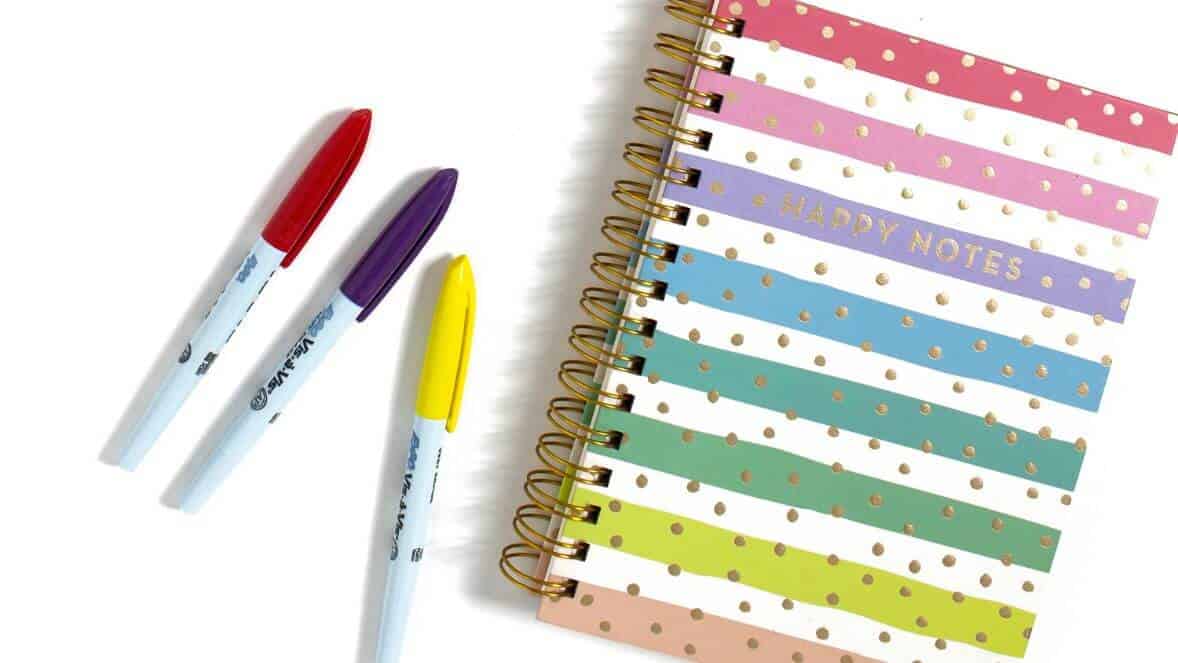Essential Lists to Make to Organize Life and Transform Chaos
I am a list making Maniac! I find joy in creating lists that range from running list grocery essentials to ambitious bucket lists.
There’s just something about putting pen to paper and transforming scattered thoughts into a neatly organized collection of goals, dreams, and plans that lights a fire in me.
Are you drowning in disarray and desperately seeking a lifeline of organization? Your journey from chaos to order is about to become a breeze. Embrace the art of decluttering, time management, and efficiency and regaining control of your life with list making!

Having a list of things to do will empower you to declutter your surroundings, allocate your time effectively, and prioritize crucial tasks, leading to a more harmonious and balanced lifestyle.
Say goodbye to the overwhelming turmoil and welcome the tranquility that comes with a well-organized life. It’s time to bid chaos farewell and embrace the order with open arms.
This post may contain affiliate links, which means I may receive a commission, at no extra cost to you, if you make a purchase through a link. Please see my full disclosure for further information.
Benefits of Lists for Organization
Creating and maintaining lists offers a myriad of benefits that extend beyond mere organization. Firstly, list-making serves as a powerful cognitive tool, aiding in memory retention and mental clarity.
By jotting down tasks, goals, or ideas, individuals can prioritize and visualize their objectives, which helps in staying focused and avoiding overwhelming feelings.
Lists also provide a tangible sense of accomplishment as items are checked off, fostering motivation and a positive mindset.
Furthermore, lists serve as a guide for effective time management, making sure that crucial tasks are not missed, and deadlines are achieved.
This orderly approach not only boosts productivity but also reduces stress by breaking down intricate projects into more manageable and achievable steps.
Ultimately, the act of list-making proves to be an invaluable strategy for promoting organization, productivity, and overall well-being in both personal and professional spheres of life.
- A well-organized environment, be it at home or at work, eliminates distractions and unnecessary clutter, allowing your mind to focus on the tasks at hand.
- It instills a sense of control and competence, leading to improved focus and efficiency.
- Lists ensure that each moment is utilized purposefully, reducing procrastination and enhancing satisfaction and achievement.
Therefore, organization plays a crucial role in guiding individuals toward a life that is more structured, productive, and fulfilling.
Whether it’s in your living space or workplace, a well-organized environment eliminates unnecessary distractions and clutter. Enabling your mind to concentrate on tasks effectively.
Hence, organization plays a crucial role in guiding individuals toward a life that is more orderly, efficient, and satisfying. In a world that is constantly demanding and full of distractions, the importance of encouraging and preserving organizational skills cannot be emphasized enough.
By recognizing the value of organization, you can unlock the potential for a more streamlined and efficient life.
Master Your Productivity With a Master List
If you’re looking to get your life organized, then creating a master to-do list is a great way to start. It’s not always possible to recall every task, and having a centralized space for organization is crucial.
This makes it easier for you can break each task down into smaller, achievable goals. This makes it much easier to stay motivated throughout the process.
Whether you’re working on your regular home to-do list or trying to keep track of multiple projects at once, a well-organized master list will help you stay on track.
Make it a habit to update your list on a regular basis and prioritize your tasks accordingly. Soon, you’ll be quickly ticking off those tasks!

Some lists to maintain in your master list could include:
- Daily list
- Household management
- Financial/Budget lists
- Emergency List
- Contacts List
- Self-Care List
- Simple organization lists
Essential Lists for Daily Productivity
Daily productivity thrives on four essential lists that help streamline focus and tasks. I use all of these most days.
- The daily list serves as a beacon, outlining specific goals and priorities for the day.
- A daily list schedule takes it a step further, providing a structured timeline for your tasks.
- The brain dump list acts as a reservoir for all thoughts, ideas, and tasks, preventing mental clutter.
- A distraction list is a strategic tool to identify and manage potential interruptions, enabling you to maintain focus.
These essential lists collectively form a powerful toolkit, guiding you through each day with clarity, organization, and heightened productivity.
Make a Daily list
One of the key elements of transforming chaos into order is mastering the art of daily productivity.
By creating essential lists for daily tasks, you can effectively manage your time and ensure that important responsibilities are not overlooked.

From prioritizing tasks to setting achievable goals, these lists are instrumental in fostering a productive routine.
This not only enhances efficiency but also promotes a sense of accomplishment, as you physically tick off completed items.
Furthermore, lists help to declutter your mind, freeing up mental space for more critical thinking and creativity. They foster a sense of control and direction, making the management of daily chores and long-term projects alike more manageable.
A daily to-do list is a typical organizational tool that can remarkably enhance daily productivity. This list should ideally be created at the start of the day, or better yet, the night before. It should have everything needs to be accomplished, both vital and non-essential.
By noting down responsibilities, you free up mental space, allowing for increased concentration and productivity. Moreover, by prioritizing tasks within the list, you ensure that vital tasks are not overshadowed by less important ones.
Prioritization can be based on urgency, importance, or deadlines. The satisfaction derived from ticking off completed tasks also provides a motivational boost, encouraging further productivity.
Time Block a Daily Schedule

A good idea is to include a daily schedule list. I make it part of my morning routine to l break down my day into time blocks, each time block assigned to a specific task or activity.
This daily schedule list offers a clear visual of how your day is structured, allowing for better time management and efficiency.
By allocating specific time slots to tasks in your daily and weekly to-do list, you can reduce the risk of underestimating the time required for each task. Use your Google calendar to set up reminders.
Not only does this method of list making increase productivity, but it also ensures a balance between work, personal chores, and leisure activities.
Whether it’s completing daily household chores, running errands or keeping track of your work projects, it’s essential to have a daily schedule in place. Knowing that at the end of the day you accomplished all that needed your attention.
Time blocking can help avoid burnout and maintain a healthy work-life balance.
Clear Mental Clutter with a Brain Dump List
The first step towards organization and decluttering your mind is to create a ‘Brain Dump List’. This list serves as a repository for all tasks, thoughts, ideas, and responsibilities that are crowding your mind.
The purpose is to transfer everything that’s occupying mental space onto paper, without worrying about order or priority. Thereby avoiding a lot of time lost spent organizing them.
Be it an upcoming deadline, a grocery list, appointment reminders, or even fleeting thoughts of a vacation, jot it all down. Or, use a digital voice recorder to say it and get it out of your head!
This unfiltered, raw list aids in clearing mental clutter, making room for focused thinking and prioritization.

Harnessing the Distraction List
In today’s hyper-connected world, distractions are at every corner, threatening our focus and productivity. A distraction list is an effective tool to combat this challenge.
Whenever a distracting thought or task enters your mind, instead of addressing it immediately, jot it down on a piece of paper or even on sticky notes for later review.
This allows you to remain focused on your current task without the mental burden of forgetting this new thought.
By allocating specific time slots to review this list, you can ensure that these distractions are attended to, without hampering your productivity during critical tasks.
A Distraction List, therefore, serves as a buffer between you and potential disruptions, enabling a more focused and efficient work rhythm.
Lists to Streamline Household Management
Managing a household can often feel overwhelming, but with the right lists in place, you can transform the chaos into seamless order.
From meal planning and grocery lists to cleaning schedules and maintenance tasks, organizing your home becomes significantly more manageable with the aid of these essential lists. Adding a color coded family calendar in your home can help everyone stay on track.
Utilizing lists to streamline household duties can be a game-changer, significantly reducing the stress and confusion that can often accompany managing a home. A well-structured list gives you a clear overview of what needs to be done and when. Helping you to strategize your actions and allocate your time effectively.

Begin Meal Planning to Simplify Grocery Shopping
A weekly meal planning list can simplify your grocery shopping list and eliminate the daily dilemma of deciding what to cook. Try developing a meal plan for the week and begin doing some meal prep ahead of time.
This way, you’ll know what to add to your grocery shopping list. Making sure to have everything you need on hand for easy and stress-free cooking.
Going to the grocery store can be a hectic experience, especially when you forget something important. That’s why taking a few minutes to make a list can save you time and money in the long run.
Not only can you ensure you get everything you need, but you can also stay organized and focused while shopping.
Using this technique will make your grocery shopping experience much more efficient and enjoyable. Saving both time and money!
Home Harmony: Cleaning Schedules and Task Lists
Similarly, a cleaning schedule can ensure regular maintenance of different areas in your house, preventing tasks from piling up and becoming overwhelming.
Daily tasks, such as quick tidying and wiping surfaces, contribute to the overall cleanliness. Weekly activities, like vacuuming and changing bed linens, delve deeper into maintaining a fresh living environment.
While monthly and annual cleaning tasks, such as cleaning appliances and organizing closets, prevent clutter from accumulating. Not to mention, allows for a thorough examination of seldom-tackled areas, ensuring a deep and lasting cleanliness.
Take these lists a step further by assigning certain tasks to specific days which can make the workload more manageable and structured.
Lists also nurture shared responsibility within the family, clearly outlining each member’s assigned tasks.

By breaking down cleaning responsibilities into these daily, weekly, monthly, and annual categories, you not only maintain a consistently clean home but also make the process more manageable and less overwhelming.
Home Inventory and Maintenance Lists
It can be overwhelming to keep track of everything you own in your house. The best thing is taking the time to make an inventory to save you time, money, and stress.
Knowing exactly what you have and where it is can help you avoid buying duplicates or losing track of important items.
It can be easy to accumulate things in our homes without even realizing it. Suddenly, we have stacks of old magazines, various bags of unidentifiable objects, and overflowing closets.
Creating an inventory of all your belongings at home is an excellent method to get organized and assess what you currently own.
Along with creating an inventory, it’s also a good idea to take note of projects around the house that may need attention.
From fixing a leaky faucet to repainting a room, or planting new flowers in the garden. Maintaining a checklist of tasks can assist in staying on top of home maintenance, preventing minor issues from escalating into major problems.
By taking these steps, you can keep your household organized and in good condition.
Be Prepared with an Emergency Kit
In the event of an emergency, it’s crucial to have a properly stocked emergency preparedness kit. And this means maintaining the items in it.
A properly assembled kit should contain essential items such as non-perishable foods (e.g., canned goods and energy bars) and provisions like bottled water.
Don’t forget first-aid supplies, including bandages, medications, and a comprehensive first-aid manual, are vital for addressing injuries.
Flashlights with extra batteries and a portable phone charger ensure communication and visibility in the dark. Along with important documents, like identification and insurance papers, should be kept in a waterproof container.
Regularly review and update your emergency preparedness kit to keep it current and effective in times of need.
Compiling a list of expiration dates ensures that your kit is well prepared.
Maintaining a Comprehensive Contact List

Put together a list of contacts with phone numbers, emails, and other pertinent information
Maintaining a current list of contacts with phone numbers, emails, and other pertinent information is a necessary task in both personal and professional life.
This not only allows for quick communication but also ensures that you have access to all necessary information when required. It can be invaluable in emergencies, or simply when you need to send a quick message or make a call.
So, take some time to update and organize your contact list, removing outdated information and adding new contacts as necessary. Make sure you have a printed copy easily accessible to all family members in case they need it.
We all keep this information online, but if something happens to me, I want to make sure my kids can get ahold of their grandparents!
It’s one of those tasks that might not seem vital until the moment you need it.
Streamlining Your Finances
Budgeting and managing finances can feel daunting without a clear direction. However, the use of practical lists can simplify this process, leading to better financial understanding and control.
A comprehensive budget list can provide a snapshot of your income, fixed expenses, variable costs, and potential savings, facilitating insightful financial decisions. And marking down important tasks for billing due dates, or tax documents can prevent issues.
Similarly, an expense tracker list can illuminate where your money is going, enabling you to identify trends and make necessary adjustments.
Lastly, a savings goal list can act as a motivational tool, encouraging you to prioritize savings and work towards financial milestones.
By leveraging these lists, you can create a structured plan, increase financial awareness, and pave the way towards financial stability and independence.
Achieving financial stability and peace of mind often begins with effective organization. By creating practical lists tailored to your financial needs, you can gain clarity and control over your monetary matters.
Start by outlining your monthly expenses, including necessities such as rent or mortgage, utilities, groceries, transportation costs and other important things.
Establishing different categories for your expenses allows you to pinpoint areas where you might need to tweak items in your budget.
Don’t forget the little things, such as entertainment expenses.

Financial Planning
Next, consider compiling a list of short-term and long-term financial goals.
Whether you’re establishing an emergency fund, paying off debt, or saving for a significant purchase, having a clear roadmap can keep you focused and motivated.
Additionally, creating a monthly budget that details your income and anticipated expenses will provide a structured framework for managing your finances effectively.
By sticking to your budget, you’ll be able to meet monthly goals and make adjustments as needed.
It’s important to remember that a budget doesn’t have to be extreme – it’s simply a tool to help you manage your finances more effectively.
So start small, keep track of your spending, and watch as your good habits in budgeting help you reach your financial goals.
Lists for Personal Wellness and Self-Care
Amidst the bustle of our lives, it’s crucial to prioritize personal wellness and self-care to maintain a healthy lifestyle.
Creating lists that cater to your well-being can serve as a compass in navigating the journey towards a healthier and more balanced lifestyle.
Moreover, creating a list of achievable wellness goals, whether it’s maintaining a regular fitness regimen or dedicating time for relaxation, can help you stay committed to nurturing your overall well-being. Additionally, compiling a list of self-care activities that bring you joy and tranquility can serve as a valuable resource during moments of stress or fatigue.
Using a Bullet Journal
In your bullet journal for self-care, consider incorporating the following elements:
- Daily Affirmations: Dedicate a section to positive affirmations that uplift and motivate you to your daily routine.
- Mood Tracker: Use a color-coded system to track your daily moods and identify patterns in your emotional well-being.
- Gratitude List: Cultivate a habit of gratitude by jotting down things you’re thankful for, promoting a positive mindset.
- Self-Care Goals: Outline specific self-care goals, whether they involve exercise, mindfulness, or personal hobbies.
- Meal Planning: Plan nourishing meals to support your physical well-being and energy levels.
- Sleep Journal: Monitor your sleep patterns to ensure you are obtaining the rest necessary for optimal health.
- Exercise Log: Document your physical activities, whether it’s a workout routine or a simple daily walk.
- Mindfulness and Meditation: Create a section for mindfulness exercises or meditation practices to enhance mental well-being.
- Hobbies and Interests: Reserve space to explore and plan activities that bring you joy and relaxation.
- Reading List: Compile a list of books or articles related to self-improvement, mental health, or personal growth.
- List of TV Shows: Create a list of TV shows you would enjoy watching. Purely for relaxation and enjoyment. You deserve it!
Keep in mind that your bullet journal is a personal expression of your self-care journey, so don’t hesitate to tailor it to your preferences and requirements.
Scheduling & Crafting Your ‘Me-Time’ List
Amidst the chaos, finding moments for self-care becomes imperative, leading to the creation of a “me-time” list.
Devoting a few precious minutes each day to activities that bring joy and relaxation can be transformative. Whether it’s a nature walk, diving into a captivating book, or losing yourself in favorite tunes, this intentional self-care practice rejuvenates and empowers.

By scheduling daily moments for yourself, you not only feel refreshed but also cultivate the energy and focus needed to pursue your goals with renewed commitment.
Combining the art of goal-setting with dedicated self-care ensures a harmonious balance, allowing you to thrive both personally and professionally and create healthy new habits.
Embrace List-Making for Balance
Incorporating the practice of list-making into our everyday life is the best way to achieving balance and organization. Reducing our busy schedules into manageable chunks of time.
Lists introduce order, clarity, and purpose into the often chaotic fabric of daily life. Whether planning a hectic day, managing numerous tasks, or setting long-term personal and professional goals, lists become our reliable compass.
Ensuring we stay on course and maintain focus. These lists transform overwhelming challenges into manageable, actionable steps, enabling us to navigate our path methodically toward our objectives.
Moreover, the joy from ticking off completed tasks fosters motivation, a sense of accomplishment, and tangible progress.
In essence, the art of list-making emerges as a potent tool in our arsenal, propelling us toward a life that is not only organized but also balanced and deeply fulfilling.







